Rome now and then are almost two different cities. The eternal city has long held the imagination of the world with its rich history, symbolizing the might of one of the greatest empires ever known. The city today is a blend of modern life amidst ancient relics that whisper tales of an ancient era. Once the capital of a vast empire that spread across continents, Rome now thrives as Italy’s political and cultural most important city, demonstrating an incredible narrative of resilience and transformation through centuries.
The Eternal City, as it is often called, stands as one of the greatest human achievements, showcasing architectural marvels that have stood the test of time. From the iconic Colosseum to the grandeur of the Vatican, Rome is a living museum drawing millions to witness its breathtaking legacy. The city has evolved, but the layers of its past remain visible in the buildings, the art, and the urban layout, bridging the ancient with the contemporary. Rome has adapted to the changes of each era but retained the essence of its historical glory which is still integral to the city’s identity.
Key Takeaways
- Rome has evolved from an ancient empire to a modern capital while preserving its historical significance.
- The city’s architecture tells a story of its past, with landmarks and ruins that attract visitors from around the world.
- Maintaining a link between its rich cultural heritage and contemporary advancements remains a distinctive feature of Rome.
Rome Now and Then – History
Rome’s evolution from a small settlement to a monumental city encapsulates the essence of its long history. This city witnessed the rise and fall of the Roman Republic, endured the Middle Ages, and embraced the changes of the Modern Era.
Ancient History
Ancient Rome began as a small village on the Tiber River. It grew in power and size, eventually transforming into the Roman Republic. This period was marked by innovations in law and governance. Key developments included the codification of laws and the establishment of a complex societal structure comprising Patricians and Plebeians.
- 509 BC: The Roman Republic was established.
- 3rd century BC: Rome expanded, fighting the Punic Wars against Carthage.
Middle Ages
After the fall of the Empire, Rome entered the Middle Ages, for a period of time liberated by the Eastern Roman Empire and later as the center of the Papal State. During this era, Rome became the epicenter of the Christian world. The power struggle between the papacy and the Holy Roman Empire characterized the Middle Ages in Rome and vastly influenced this ancient city landscape.
- 5th century: The fall of the Western Roman Empire.
- 756 AD: Donation of Pepin recognized the Papal States.
Modern Era
Rome in the 19th and 20th centuries saw dramatic changes. The city played a central role in Italy’s development as a nation-state. It saw the end of Papal rule over the city and the establishment of Rome as the capital of the Kingdom of Italy.
- 1870: Capture of Rome completed the unification of Italy.
- Post-World War II Rome experienced economic growth and modernization.
Rome Now and Then – Architectural Heritage
Rome’s cultural and architectural heritage is a testament to the city’s long history of artistic expression and engineering prowess. This legacy is evident in the grandeur of the Colosseum, the enduring utility of ancient aqueducts, and the wealth of literature that has influenced countless generations.
Artistic Achievements and Literature
Art in Rome is as old as the city itself, with its traditions rooted deeply in history. The Roman Forum is not just a plaza but an exhibition of time-honored public art with statues and monuments that tell tales. The use of marble and columns in Roman architecture serves as a symbol of both strength and beauty, a combination that reflects the city’s focus on both aesthetics and durability.
Infrastructure and Engineering
The marvels of Roman infrastructure demonstrate a high level of engineering skill. For example, the aqueducts, which still stand today, show their mastery of water resources and urban planning. Their practicality is matched by their grand appearance, often lined with stately arches across the landscape.
Concrete, which was a Roman innovation, remains a fundamental building material that transformed construction techniques, evidenced in many structures like the Colosseum. This amphitheater, an iconic symbol of both culture and history, showcases the use of engineering solutions to house entertainment, social gatherings, and sporting events, accommodating thousands of spectators.
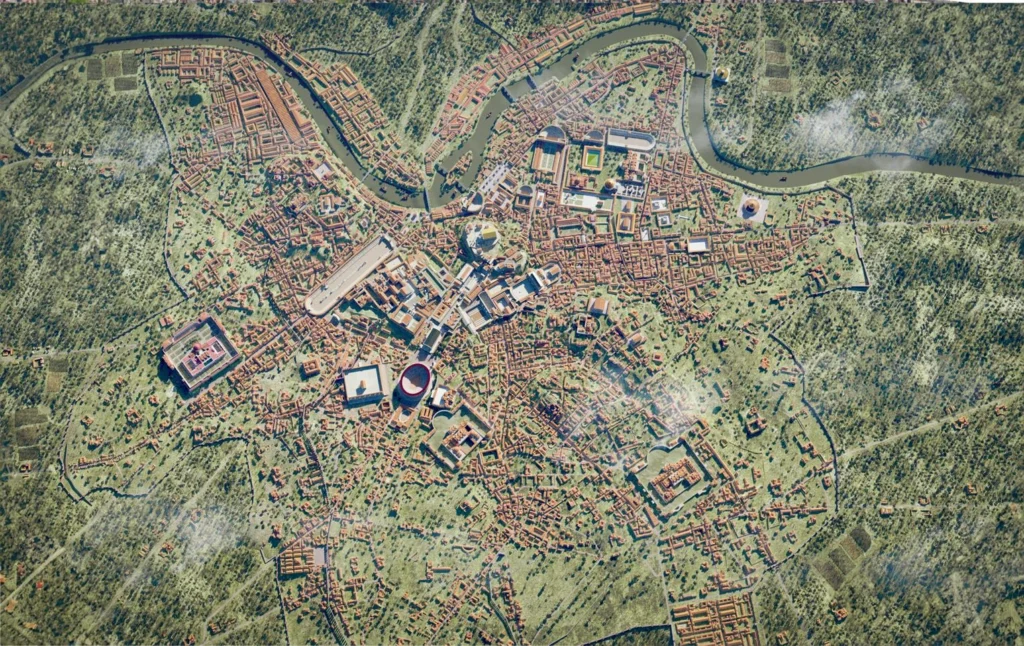
Rome Now and Then – Landscape
The landscape of Rome has undergone dramatic changes throughout its history, reflecting the city’s evolving political, cultural, and social dynamics. Ancient Rome began as a small settlement on the Palatine Hill and expanded across the other six hills, transforming with monumental structures like the Roman Forum, Colosseum, Circus Maximus, and numerous temples. Extensive infrastructure such as aqueducts, roads, and sewers facilitated urban growth, while luxurious villas and gardens dotted the city.
After the fall of the Western Roman Empire, Rome’s population dwindled, and many grand structures fell into disrepair or were repurposed, with large areas reverting to agricultural use. The Renaissance brought a revival of interest in classical antiquity and significant urban renewal, funded by popes and wealthy patrons, resulting in new churches, palaces, and public spaces, with architects like Bramante, Michelangelo, and Bernini transforming the city with works like St. Peter’s Basilica and Piazza Navona.
The Baroque period added elaborate fountains and dynamic urban planning. The 19th and 20th centuries saw Rome expand beyond its ancient walls, integrating modern infrastructure like railways and new residential areas, while preservation efforts increased to protect historical sites and turn ancient ruins into tourist attractions. Today, Rome’s landscape is a mix of ancient ruins, Renaissance and Baroque splendor, and modern urban life, with green spaces like the Villa Borghese providing respite amidst the bustling city, while ongoing archaeological projects continue to uncover and preserve Rome’s rich history.
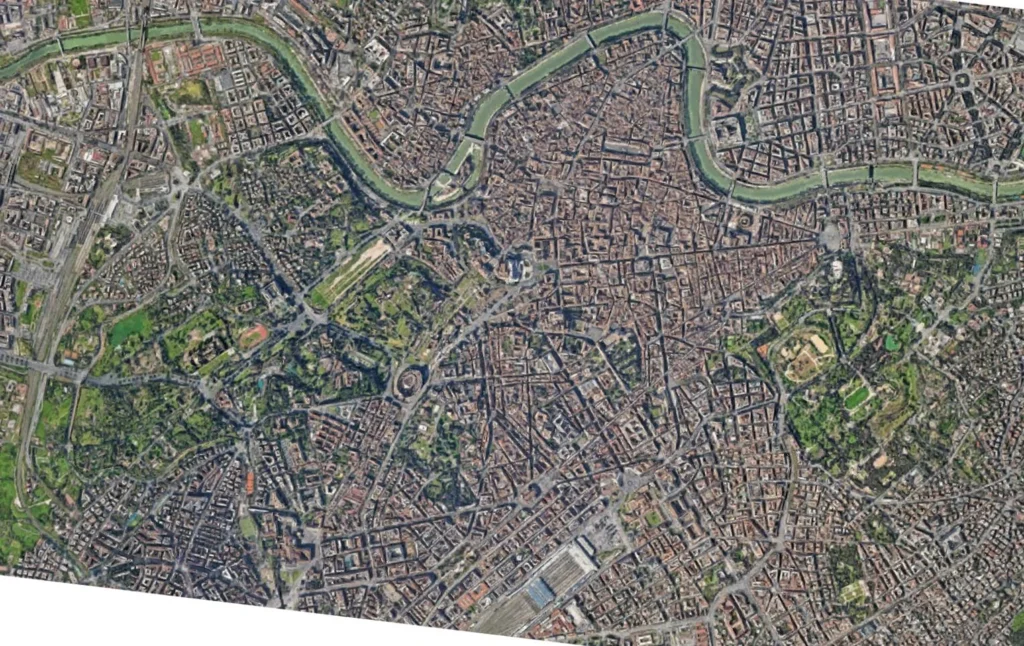
Rome Now and Then – Landmarks
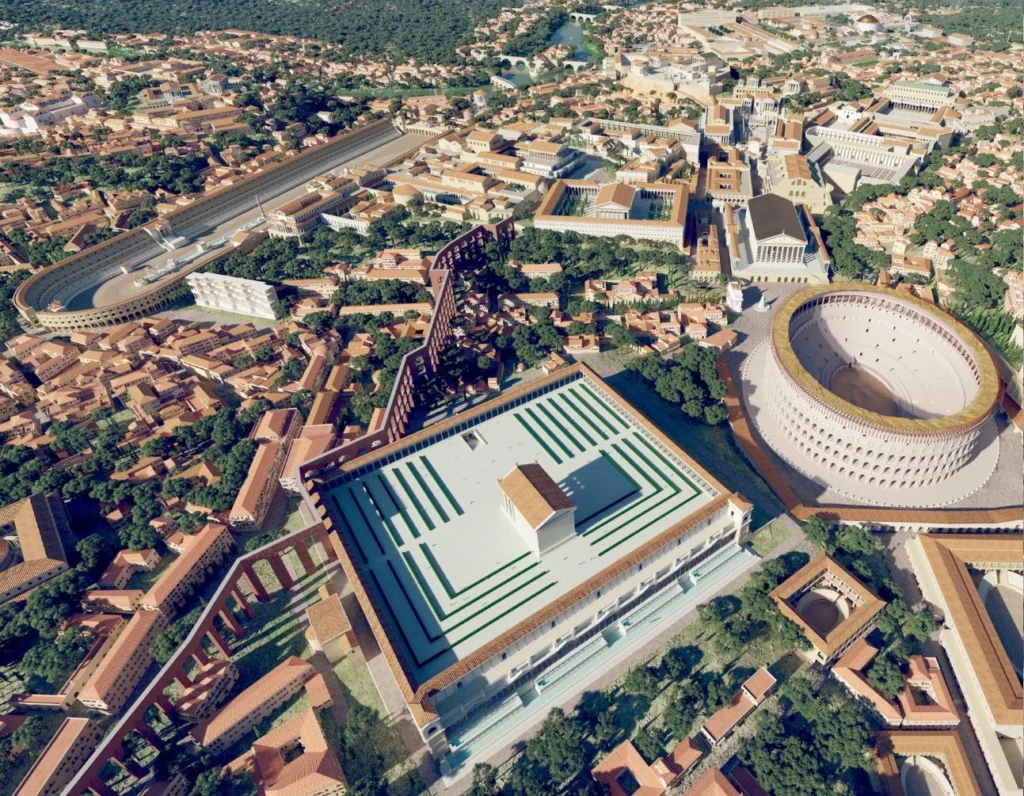
Colosseum
The Colosseum, a marvel of ancient engineering, once hosted gladiatorial bouts and public spectacles. The structure’s elliptical design was a feat, combining both aesthetics and function to manage large crowds. Constructed between 70-80 AD, the Colosseum originally served as a grand amphitheater for gladiatorial contests and public spectacles, hosting between 50,000 to 80,000 spectators. Over the centuries, it underwent numerous modifications, including the addition of subterranean levels.
The spread of Christianity led to a decline in certain events, and by the 5th century, natural disasters, especially earthquakes, caused significant damage. During the medieval period, it was repurposed for housing, workshops, and as a fortress, with further degradation due to material stripping. The Renaissance sparked renewed interest in its preservation, although it was still used as a material source.
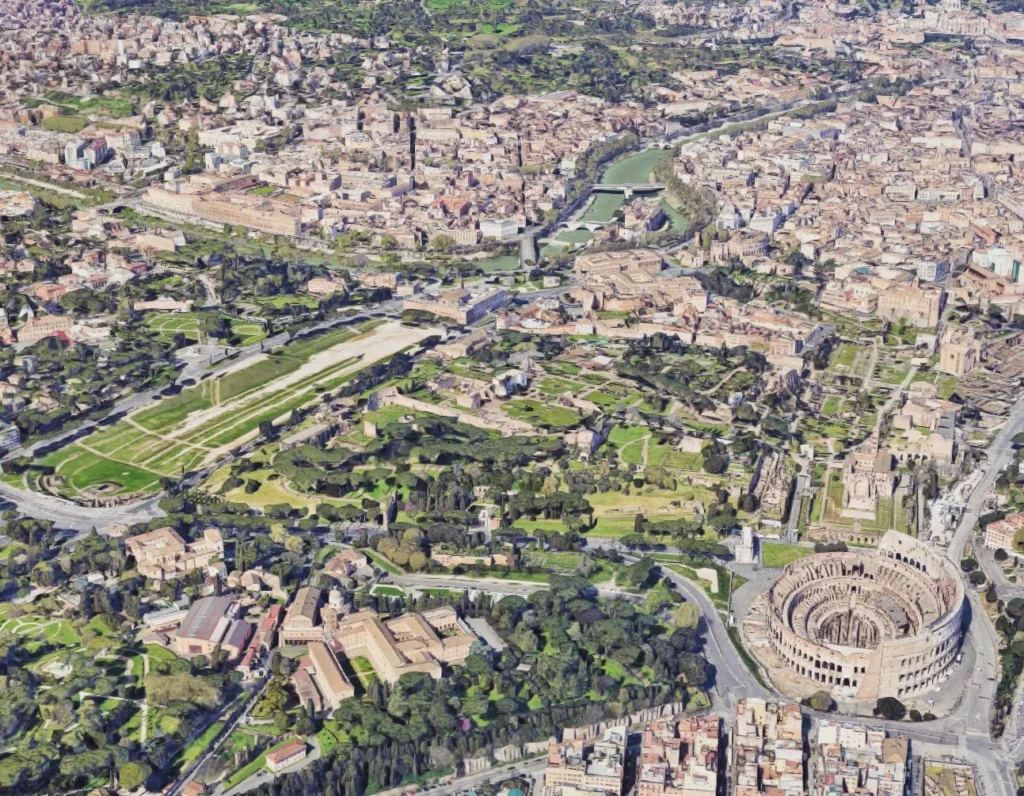
From the 19th century onwards, restoration efforts began, transforming the Colosseum into a major tourist attraction and symbol of Rome’s historical legacy, with ongoing conservation efforts to maintain its structure and cultural significance. Today, despite the wear of time, it remains a powerful symbol of Rome, attracting millions who marvel at its enduring strength and the tales it holds within its weathered walls.
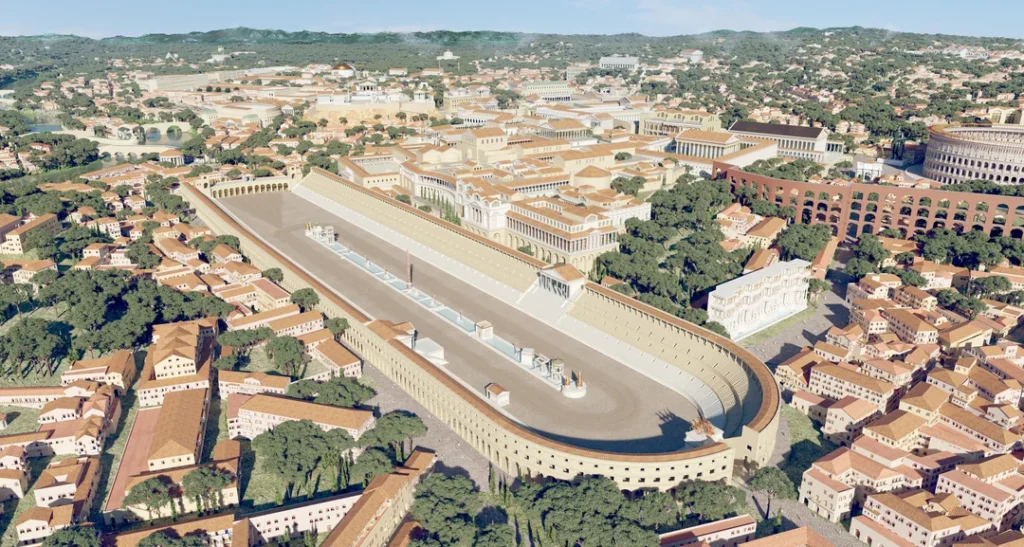
Circus Maximus
As for the Circus Maximus, it once stood as Rome’s largest stadium, used mainly for chariot races. It has experienced significant transformations over its long history. Initially, in the 6th century BC, it began as a simple, open area for public games and was later developed into a more formalized structure under various Roman kings and leaders. During the Republic and early Empire, it was expanded and improved with permanent seating, a central barrier with monuments, and an elaborate starting gate.
By the time of Julius Caesar, it could accommodate approximately 150,000 spectators, with further expansions under later emperors increasing its capacity to almost 250,000. It hosted chariot races, gladiatorial games, public feasts, and religious festivals, becoming the primary venue for large-scale entertainment. However, as Christianity became more prominent in the 4th century AD, the violent spectacles declined, leading to a decrease in the use of the Circus Maximus.
Natural disasters, such as fires and floods, caused significant damage, and it was not always fully restored. The last recorded chariot race occurred in the 6th century under the Ostrogothic King Totila. During the medieval period, the Circus Maximus fell into disuse and was largely abandoned, with its materials repurposed for other buildings. The site was eventually converted into agricultural land, with parts used for grazing and farming. Interest in ancient Rome during the Renaissance led to its rediscovery, but it was still primarily used for practical purposes rather than preservation.
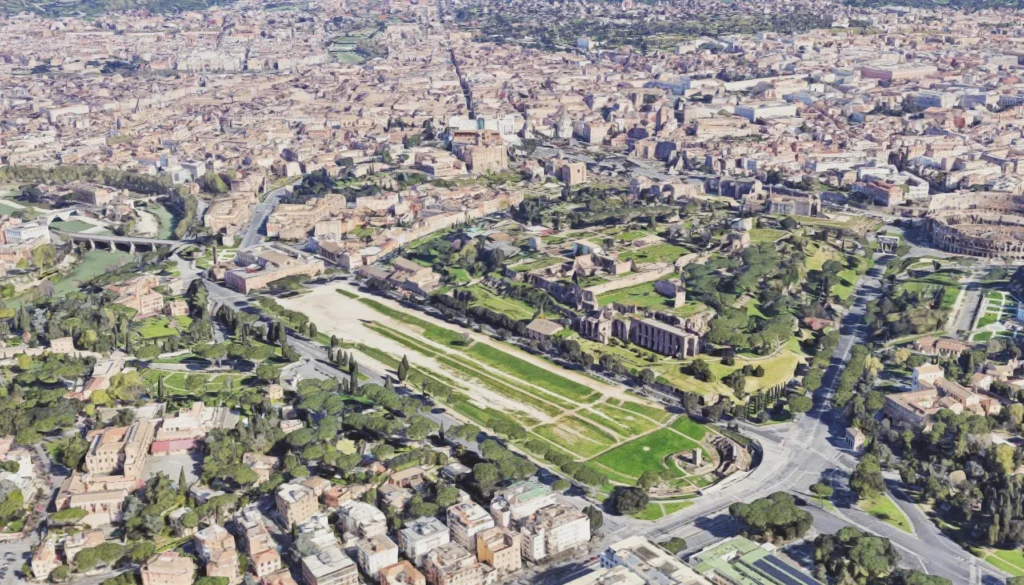
Archaeological excavations began in the 19th century, uncovering more about its structure and use. The Circus Maximus was transformed into a public park and venue for concerts, political rallies, and public gatherings. Today, it is a significant archaeological site and tourist attraction, with ongoing efforts to preserve its history while allowing public access, reflecting the changes in societal values and urban development over the millennia.
Now, the structure has mostly eroded, leaving little but the outline of the track and the field. Yet, even in its subdued state, the vast space reflects the grand scale on which the Roman Empire had constructed, and it offers a scenic open area for locals and tourists to gather, enveloped by the city’s ancient past.
Mausoleum of Hadrian
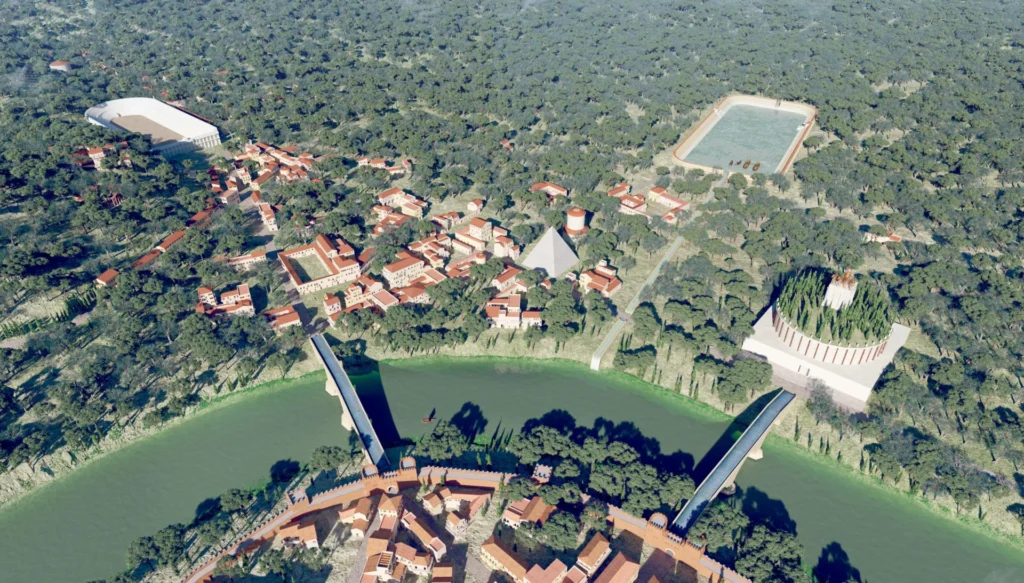
Originally built as a tomb for Emperor Hadrian and his family, the Mausoleum of Hadrian has had a layered history. It went through numerous transformations since its construction in the 2nd century AD. Completed by Antoninus Pius in 139 AD, the structure served as a tomb until the early 5th century, after which it was converted into a military fortress by the Roman popes to protect against barbarian invasions. During the Middle Ages, the mausoleum was further fortified with walls, towers, and battlements, and it became a key defensive structure for the Vatican. At that time the mausoleum became known as Castel Sant’Angelo.
In the 14th century, Pope Nicholas III connected it to St. Peter’s Basilica via a fortified corridor known as the Passetto di Borgo. The Renaissance saw Castel Sant’Angelo transformed into a papal residence, complete with luxurious apartments and elaborate decorations. It also served as a prison and witnessed numerous political intrigues and executions.
By the 19th century, the structure had fallen into disrepair, but extensive restoration efforts in the 20th century revitalized it as a museum. Today, Castel Sant’Angelo is a prominent historical monument and tourist attraction in Rome, showcasing its layered history from imperial mausoleum to fortress, papal residence, and modern museum.
It transitioned from a tomb to a fortress, and then to a castle named Castel Sant’Angelo. This versatility in use signifies the adaptive reuse of structures in Rome over the centuries. The circular monument continues to loom over the Tiber River, a sentinel for the ages, and now serves as a museum that provides insight into Roman history.
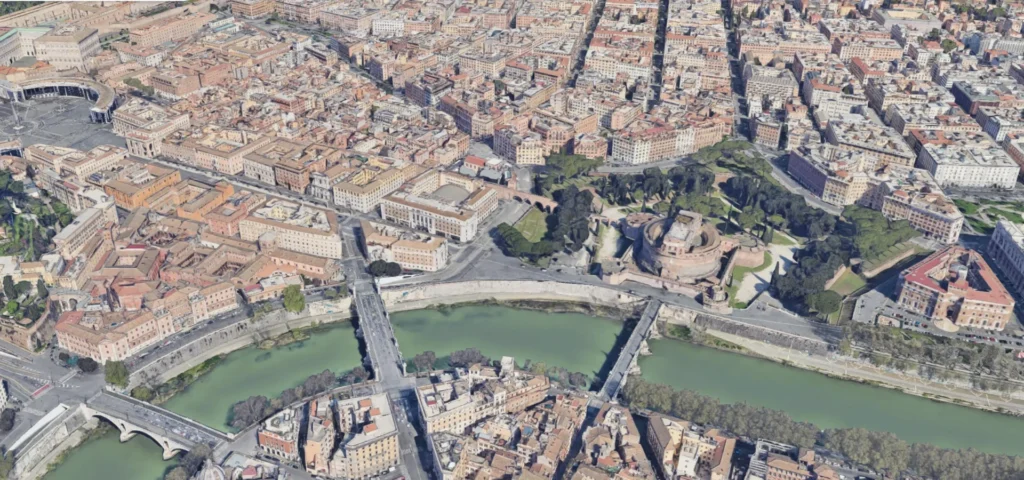
Rome now and then – Mausoleum of Hadrian Today Credits: https://www.flyoverzone.com/rome-reborn-flight-over-rome/
People Also Ask:
Rome now and then – How has the physical landscape of Rome changed from ancient times to the present day?
The landscape of Rome has seen significant alterations over millennia. Ancient Rome’s hills, such as the Palatine and Capitoline, which were once central to Roman life, are now surrounded by a modern cityscape. Marshlands have been drained, and structures like the Colosseum still stand amidst newer urban developments.
Rome now and then – What are the most significant historical sites in Rome that still exist today?
Notable historical sites in Rome include the Colosseum, an enduring symbol of Rome’s ancient power. The Pantheon, with its iconic dome, and the Roman Forum, once the heart of Roman public life, continue to tell the story of Rome’s grand past.
Rome now and then – How can one visualize the transformation of Rome from the Roman Empire period to the modern era?
One can visualize Rome’s transformation through various historical records and archaeological findings. Key transitions from the Roman Empire to today’s bustling metropolis can be traced by examining urban development, population growth, and architectural evolution over time.
Rome now and then – In what ways has Rome’s culture evolved since ancient times?
Rome’s culture has evolved from the polytheistic beliefs of antiquity to a city deeply rooted in Christian traditions. Layered over this are the Renaissance influences, and now modern Rome fosters a diverse cultural scene that includes art, cuisine, fashion, and film.
Rome now and then – What technologies are used to reconstruct and visualize ancient Rome in today’s context?
Technologies such as 3D modeling and computer simulations are employed to reconstruct and visualize ancient Rome. These digital tools help historians and the public to imagine what the city looked like at the peak of its power.
Rome now and then – What were the major factors contributing to the decline of ancient Rome?
The decline of ancient Rome was a complex process influenced by factors such as economic troubles, overexpansion, military overspending, and political corruption. External pressures from invading tribes and the splitting of the Empire also played crucial roles.
Hello, my name is Vladimir, and I am a part of the Roman-empire writing team.
I am a historian, and history is an integral part of my life.
To be honest, while I was in school, I didn’t like history so how did I end up studying it? Well, for that, I have to thank history-based strategy PC games. Thank you so much, Europa Universalis IV, and thank you, Medieval Total War.
Since games made me fall in love with history, I completed bachelor studies at Filozofski Fakultet Niš, a part of the University of Niš. My bachelor’s thesis was about Julis Caesar. Soon, I completed my master’s studies at the same university.
For years now, I have been working as a teacher in a local elementary school, but my passion for writing isn’t fulfilled, so I decided to pursue that ambition online. There were a few gigs, but most of them were not history-related.
Then I stumbled upon roman-empire.com, and now I am a part of something bigger. No, I am not a part of the ancient Roman Empire but of a creative writing team where I have the freedom to write about whatever I want. Yes, even about Star Wars. Stay tuned for that.
Anyway, I am better at writing about Rome than writing about me. But if you would like to contact me for any reason, you can do it at [email protected]. Except for negative reviews, of course. 😀
Kind regards,
Vladimir
